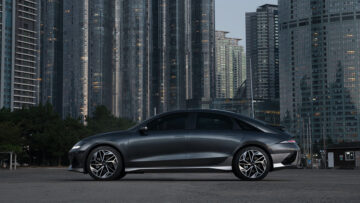If you’re like most drivers, then you’ve probably played with the idea of swapping from a gasoline car to an electric one.
With promises of helping the environment and potentially even lowering your fuel costs, electric cars are no doubt an interesting investment to consider if you use your vehicle a lot.
But with that said, switching to an electric vehicle does come with a few challenges. The way you think about your car and how often you use it will likely change, and there’s also the issue of how you actually recharge the thing too!
So to help ease you into the transition (or even warn you of some of the changes to expect), here are some of the biggest challenges of transitioning to an electric vehicle and how you can overcome them.
Getting used to charging your vehicle
If you use any type of electronic device then charging is probably nothing new to you. Whether it’s your phone, watch, or laptop, you just plug it in, it receives electricity, then you’re good to go after a few hours. But with these items, we can easily charge them at night before we go to bed or whenever we run out of juice. We simply grab a cable and plug it in. Sadly, electric cars are a little different and not as convenient when it comes to charging.
Charging an electric car can be done in as little as an hour to half a day depending on how large the battery is and how powerful the charging station is. Of course, you don’t need to fully charge your vehicle either as short trips are possible with just a brief charge. But as you might suspect already, it’s a little difficult to tell exactly how much you’ll need and how it relates to how long you charge for.
It’s also not just a case of plugging it into a domestic plug in your garage. While it does work, you’ll be waiting much longer compared to a dedicated charging unit. And as such, you’ll have to think about the costs of charging station installation, and you’ll likely need a dedicated garage in order to safely charge your vehicle.
And what happens if you’re low on charge while you’re out? If you’re lucky, then you’ll have dedicated electric vehicle charging stations on your roads. However, if you’re in an area that doesn’t have many (you can check local maps and even Google for this) then you’re out of luck and will need to call someone to help. It’s not as simple as just going to a gas station and filling it up, or even refilling it via a can that you have in the trunk.
In short, figuring out the quirks of a chargeable vehicle can be a little troublesome at times. Some people just don’t enjoy the hassle that comes with a chargeable vehicle, and that’s perfectly understandable. However, once you break out of the habits you had with a regular gasoline vehicle and have all of the necessary equipment installed, charging your electric vehicle becomes second nature.

Understanding the range of your electric vehicle
Another challenge that you’ll face is understanding the range of your electric vehicle. This is understandably lower than the range of a typical gasoline vehicle, but isn’t as limiting as you might think, especially with all of the charging stations around now.
Firstly, modern electric car ranges can go into the hundreds of miles. For most people, that’s plenty for a full charge, and you can even get away with not charging your electric car for several days if you only make short trips. But with that said, if you do plan on driving across an entire state or even further, then you’ll need to plan pit stops at charging stations. However, this isn’t that much different from stopping at a gas station to refill–it’s just a bit more work to find places that support electric cars.
Secondly, most electric vehicles these days actually show values like the expected range and battery charge to help you figure out if you have enough range. This means you don’t need to try and remember how much your vehicle is charged or what the expected range is, and you’ll get a warning if the charge is quite low. Sure, you need to do a bit of work to figure out how long your average drive is, but it makes calculating everything a whole lot easier.
Lastly, before you buy an electric car, it’s important to remember that range isn’t a number that will stay the same forever. As the battery degrades, so will the range you get. In fact, even adverse weather can reduce the range of your vehicle as it likely needs more power to get through conditions like snow. Estimating your range in these conditions takes a bit of practice, but the safer option is to always ensure you’ve got a full charge before you head out.
So in other words, understanding the amount of range that your vehicle has does require a bit of research, and this can put people off the idea of driving an electric vehicle. However, once you get accustomed to your vehicle and how far you drive on a regular basis, you’ll start to feel less anxiety when driving. Furthermore, most people develop a habit of charging their vehicle whenever possible to always ensure that they have a full tank before they leave. This almost guarantees that they’ll never run out of energy and will give them peace of mind.
Of course, if you really want to be efficient and environmentally-conscious, then charging habits themselves need to change as well, as it’s common for people to leave their vehicles charging during peak hours when everyone’s at home. This is something that will need to be solved in the future once more people switch to electric vehicles, but by then, we imagine that more people will be comfortable with the idea of working around the range on their electric vehicle.


